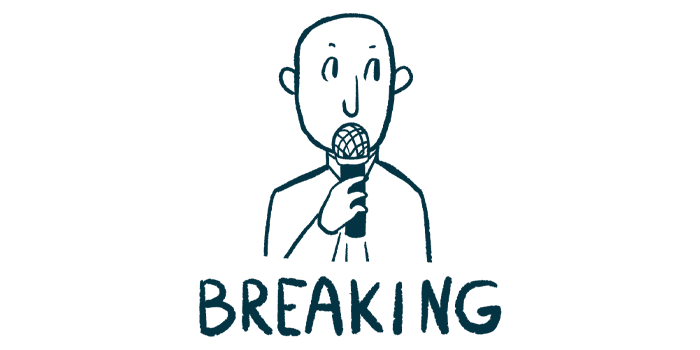Upstaza, First Gene Therapy for AADC, Favored for Approval in EU

The gene therapy Upstaza (eladocagene exuparvovec), formerly PTC-AADC, has been recommended for approval in the European Union for patients, ages 18 months and older, with severe aromatic l-amino acid decarboxylase (AADC) deficiency.
The favorable opinion was made by the Committee for Medicinal Products for Human Use (CHMP), an arm of the European Medicines Agency. The committee’s recommendations are generally accepted by the European Commission (EC), which makes the final decision on approvals for all medicines in the EU.
“We are thrilled with the positive opinion from the CHMP, and are eager to bring Upstaza to patients living with AADC deficiency,” Stuart W. Peltz, PhD, the co-founder and CEO of PTC Therapeutics, the therapy’s developer, said in a press release.
PTC anticipates that the EC will approve Upstaza under exceptional circumstances in about two months.
Marketing authorization under exceptional circumstances may be given to therapies meeting pressing therapeutic needs, but for which comprehensive safety and efficacy data cannot be obtained, either due to the disease’s rarity, ethical considerations involved in the collection of such data, or scientific knowledge gaps. These therapies are subject to specific post-approval obligations and monitoring.
If approved, Upstaza will become the first disease-modifying therapy for AADC, as well as the first approved gene therapy delivered directly into the brain.
Health authorities in each EU member state — as well as in Iceland, Norway, and Liechtenstein — will then decide separately on whether to add Upstaza to their respective public health programs, where patients can access the treatment at low or no cost.
“The difference Upstaza, a one-time gene therapy, can make is life-changing,” said Paul Wuh-Liang Hwu, MD, PhD, the lead investigator of one of Upstaza’s clinical trials at the National Taiwan University Hospital, in Taiwan.
“AADC deficiency is a devastating neurological disorder with no effective treatment,” Hwu added. “Before therapy, affected children couldn’t even lift their head, but now many can sit, stand with help, feed themselves and some can walk and talk.”
Upstaza received orphan drug designation in the EU for AADC deficiency. This designation is meant to speed the therapy’s clinical development and regulatory review, and its incentives include a 10-year marketing exclusivity period upon approval.
PTC plans to submit a similar regulatory application to the U.S. Food and Drug Administration, anticipated within the coming months.
AADC deficiency is a very rare disease caused by low to no levels of AADC — an enzyme necessary for the production of dopamine and serotonin — due to mutations in the DDC gene. Dopamine and serotonin are two major neurotransmitters, chemical messengers used by nerve cells to communicate with each other.
Upstaza uses a modified and harmless adeno-associated virus to deliver a working version of the DDC gene to nerve cells. It is delivered directly into a large brain structure called the putamen through a surgical procedure, which will be performed by a neurosurgeon at a specialized center.
The putamen is directly affected by the loss of dopamine production in the striatum, a brain region involved in motor function and rich in dopamine-producing nerve cells that connect with the putamen.
Besides its well-known role in motor control, the putamen is thought to also be involved in non-motor functions such as language, emotional processing, and chronic pain.
CHMP’s positive opinion was based on findings from two open-label clinical trials conducted in Taiwan and data from eight children in Taiwan and two children in Europe given the gene therapy under compassionate use programs.
The clinical studies included a Phase 1/2 trial (NCT01395641) and a Phase 2b trial (NCT02926066). Notably, long-term results from the children treated in Taiwan showed Upstaza led to motor and cognitive improvements that were sustained for more than five years after infusion.
Children “went from no display of any motor milestone development to developing clinically meaningful motor skills and neuromuscular function from as early as three months following treatment,” PTC stated in the release.
While none of the children had full head control before treatment, some gained the ability to walk unaided and one of them could even run freely. Treatment at younger ages was significantly associated with greater and faster motor symptom improvements.
Cognitive function and language skills improved in all patients, and reductions in other symptoms were also observed, including bad mood, excessive sweating, and oculogyric crises.
Imaging data also supported the presence of AADC activity and dopamine production in the putamen, indicating the therapy was working as intended.
Both the surgical procedure and Upstaza were generally well-tolerated, with involuntary movements as the most common adverse events. These events, which are common with dopamine-increasing therapies, were more severe in older children and resolved within months.
Should it be approved, “Upstaza will be the first marketed gene therapy that is directly administered into the brain, the first gene therapy approved in a major market in several years, the third gene therapy that is on the market now, and only the fourth in vivo gene therapy ever approved,” Peltz said.
In vivo gene therapy means that the genetic material is directly delivered to the person receiving treatment, rather than, for instance, being delivered to cells grown in the lab and then infused into the patient.






